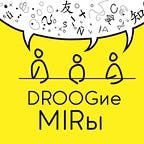by Judith Bernal
Green. Bright, urgent green…the color of life itself. Everything begins with that green chlorophyll, grabbing light from the sun and turning it into energy, grabbing carbon dioxide from our air, turning it, and water, into sugar. From air, light and water, that green makes all our sustenance, our nourishment.
Dirty white, the color of a desolate January day, with frozen grey light, the creek solid and motionless, the falls a series of massive ice sculptures straddling the gorge. Nothing moved. I walked across the frozen pool at the base of the falls, as miserable as I’d ever been, and continued around a wall of ice attached to an overhanging rock. There was a small protected space under the rock. As I entered and stood there in the darkness, I heard the trickle of falling water and eyed a thin streamlet clinging to the rockface, flowing as if it were spring. I caught my breath as I began to make out a bit of earth lodged in the cracked rock and bright green plants sprouting. Sturdy stems, two or three leaves and more coming. Even in the muted light I could see their strength, their urgent force. Outside this wall of solid ice no life moved but here behind the wall there was hope, running water, life sprouting. An omen more than an event, because those small plants were doomed to die over the next harsh months. For now it was a sign, a reminder of hope, a promise that life could begin again.
Carefully with my gloved hands I scooped out two of the young sprouts and placed them in an interior pocket of my parka. I’d bring them back to the longhouse as a testament to survival, a reminder that perhaps I too could survive the coming months. In my isolation those green sprouts were my company, my confidants, the source of waning hope. I told myself that if they could find a way to live in such harsh conditions, I could too. Or at least survive until conditions improved. Until I could find a way back to life among my fellows, back to all I’d known, back to flourishing and freedom. Those small plants gave me hope when I could find it nowhere else.
Most of that winter was spent inside the longhouse. It was cold and bitter and the days were shorter than any I’d known. My captors had brought me further north than I’d been in my short life. At first I didn’t see how humans could survive in the cold, the heavy snows, the months of spring mud when hunting in the woods was impossible. I tended the sprouts as they struggled at first, then seemed to gain strength and determination.
My adoptive family was kind. They understood I’d mourn my old life, but over the months I grew involved with the life around me, its unfamiliar rhythms, its communal warmth and family gentleness. By the time spring showed signs of first arrival, my winter companions, my little seedlings had died. I don’t remember how or why it happened. But when I went to plant them outdoors, they were beyond saving. And by then, I was almost happy in my new life.
I could speak the language. I loved my new mother. These savages weren’t savage at all if you lived and knew them. My freedom plants had died, but my life was reborn as a child of the Seneca Nation. I’d become what I once most feared in our life on the frontier. I’d become a wild Indian.
